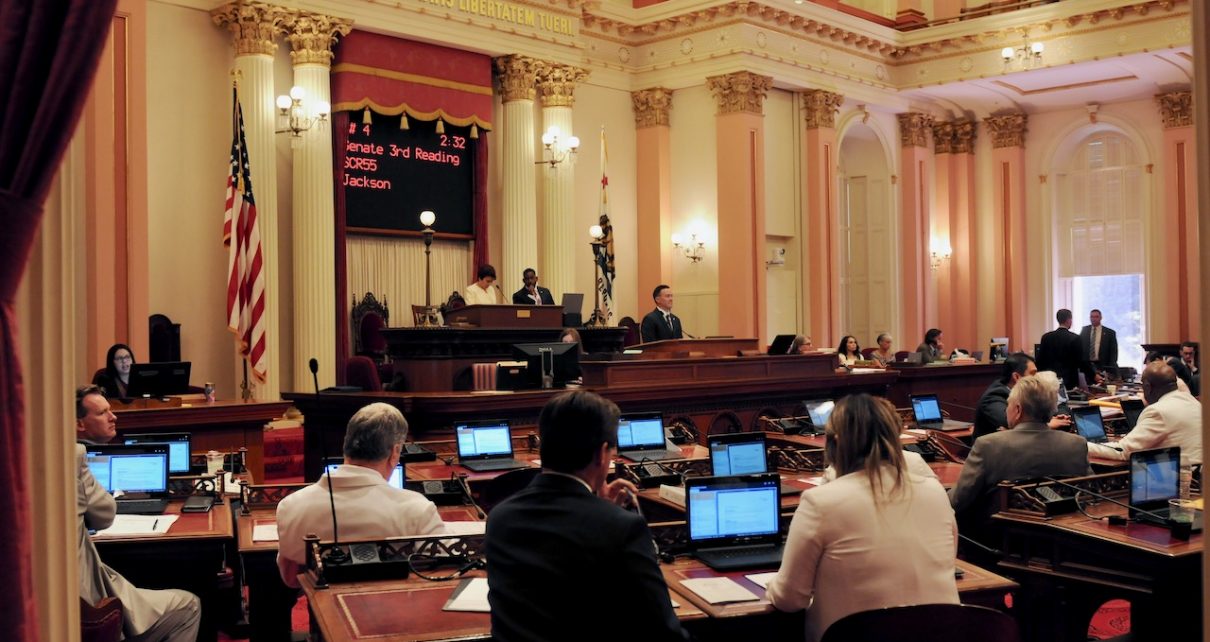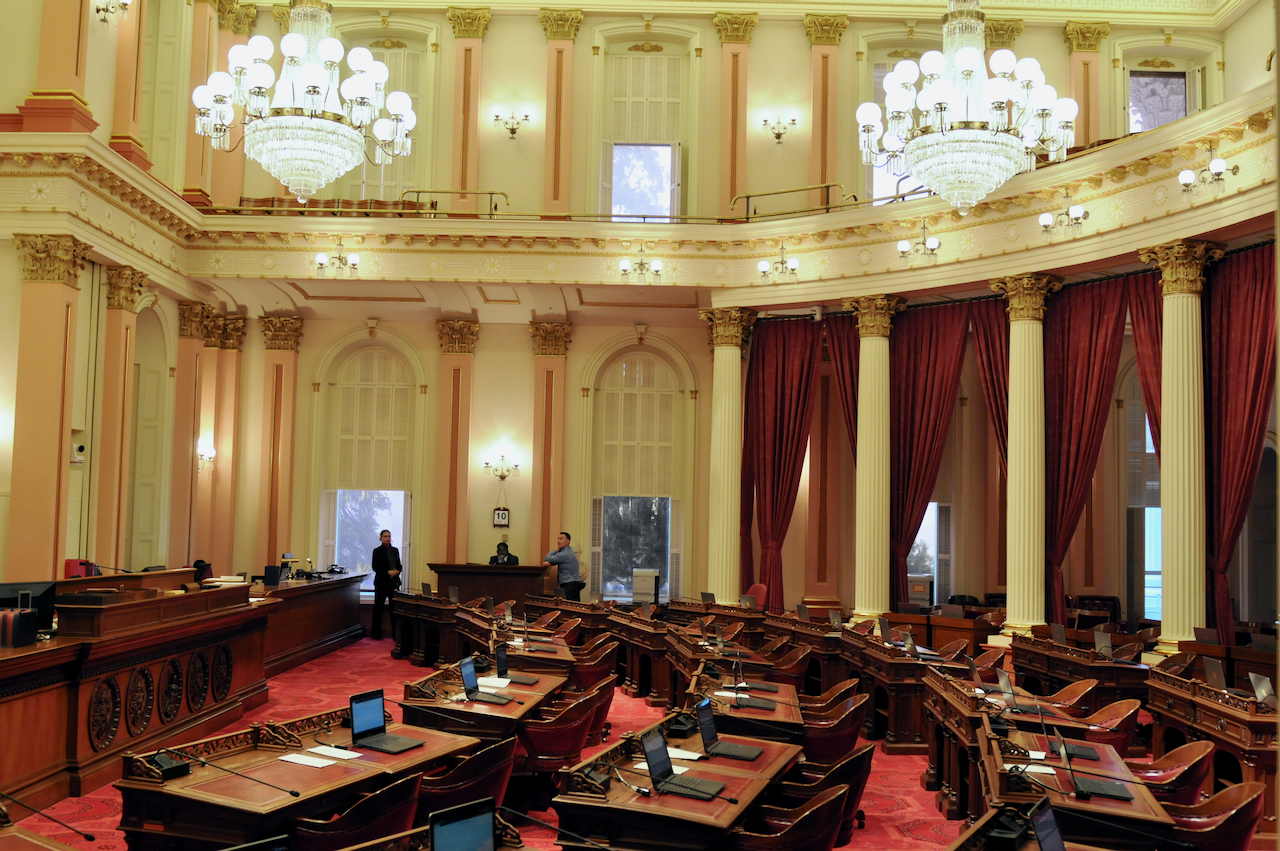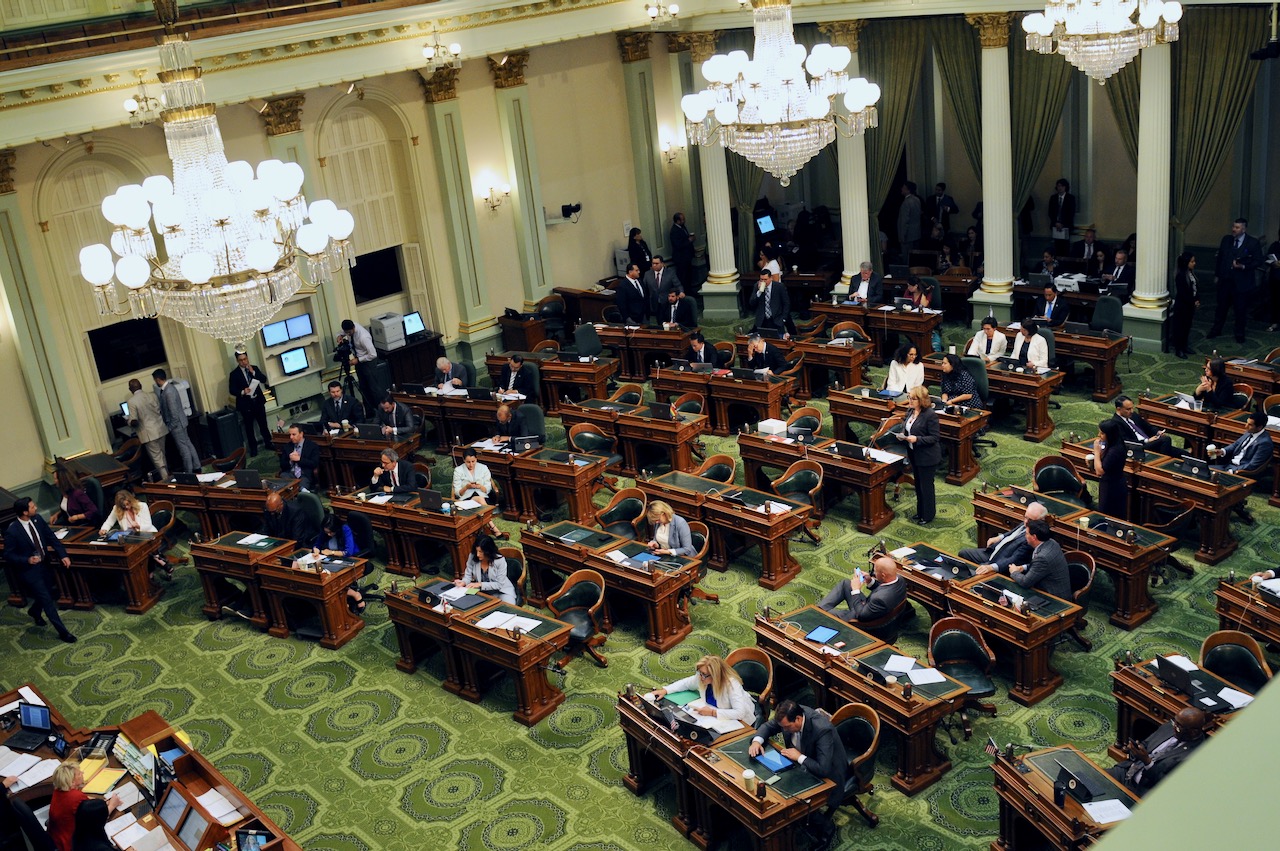
California State Senate. (Photo: Kevin Sanders for California Globe)
What Happens After a Bill Passes the Legislature?
After a bill has passed both houses, the bill is returned to the house of origin
By Chris Micheli, September 18, 2023 2:30 am
Many people believe a bill, once passed by the California State Senate and State Assembly, goes directly to the Governor’s Desk. However, there is an interim step: Engrossing and enrolling (often referred to as “E&E”). E&E is an important part of the legislative process that occurs out of public sight and is generally not known or understood by many who follow the action in the California Capitol.
When a bill has been amended, only the engrossing process takes place. However, after a bill passes both houses of the Legislature, then engrossing occurs first and is followed by enrolling. These are two separate and distinct activities. Engrossing can occur even before a bill has passed either floor of the Legislature. Enrolling, on the other hand, only occurs after a bill has passed both houses.
So, what occurs in these to processes?
Engrossing
In engrossing, there is a comparison of the printed bill to assure its likeness to the original bill and that the bill’s amendments were properly included. After being proofread by the E&E staff to assure the amendments were done properly, the bill is “correctly engrossed” and in proper form. The official proofreading also follows Second Reading and/or the adoption of any amendments to the bill.
Enrolling
In the “enrolling” stage, as explained by the Assembly Chief Clerk, an “enrolled bill” is one that has passed both houses of the Legislature and has been ordered enrolled. In enrollment, the bill is proofread for accuracy and then delivered to the governor for final action. The enrolled version of the bill contains the complete text of the bill with dates of passage, as well as certification by the Senate Secretary and Assembly Chief Clerk.
Enrollment concludes when the bill has been presented to the governor and resolutions are filed with the Secretary of State. An enrolled bill that has been approved by the governor contains the signatures of the Governor, Secretary of the Senate, and the Chief Clerk of the Assembly certifying the bill’s authenticity. That signed bill becomes the chaptered version.
Both the Assembly and Senate have a nonpartisan unit responsible for proofreading all forms of legislative measures. These units also prepare and deliver bills to the governor for consideration. Both the Assembly and Senate have an Engrossing and Enrolling Clerk and each house engrosses its own bills.
During this engrossment process, the Engrossing and Enrolling Clerk is authorized to make technical corrections and changes in the printed bill and may also send “queries” to the Office of Legislative Counsel when, in his or her professional estimation, there is a drafting error in the text of, or amendments to, a bill.
The Formal Process
After a bill has passed both houses, the bill is returned to the house of origin. If the bill has not been amended by the other house, it is immediately sent to the Engrossing and Enrolling office of the Assembly Chief Clerk’s Office (if it is an Assembly bill) or to the Committee on Rules in the Senate (if it is a Senate bill), to be enrolled.
If, however, the other house has amended the bill, then the amendments must first be concurred in before the bill may be sent to enrollment.
After enrollment and signature by the Secretary of the Senate and the Chief Clerk of the Assembly, or their designees, constitutional amendments, as well as concurrent and joint resolutions, are filed with the office of the Secretary of State. Thereafter, the time of filing is reported to the house of origin, and the record is entered in the Daily Journal. That is the end of the formal process because these measures are not acted upon by the governor.
Enrollment is the final legislative action taken on a bill before it is presented to the Governor. When the enrolled bill is delivered to the governor, it is endorsed by the Private Secretary of the governor or by some other individual designated by the governor, whose identity the governor must make known to the Speaker and the President pro Tempore.
Under the Joint Rules of the Assembly and Senate, after a bill has passed both houses it is printed in enrolled form, omitting symbols indicating amendments, and is compared by the Engrossing and Enrolling Clerk and the proper committee of the house where it originated to determine that it is in the form approved by the houses.
- Adoption of Unmarried Minors - December 28, 2025
- Bonds and Undertakings - December 28, 2025
- Joint Debtors in California - December 27, 2025




Thank you for this informative explanation! It would also be helpful to understand the constitutional rules around veto and signing. The “12 day” period for the governor to sign a bill doesn’t include Sundays, so it’s really a 2-week period. However, other rules apply to bills that are presented to the governor less than 12 days (2 weeks?) before the end of the session. Then the governor gets a longer period to consider the bill and sign or veto.
It’s not so easy to follow all the details and timing of this. Is October 13 the current signing/veto deadline for the bolus of bills passed in the last weeks? Or, where does this come from?
California’s rules around line-item veto are also a challenge to follow!